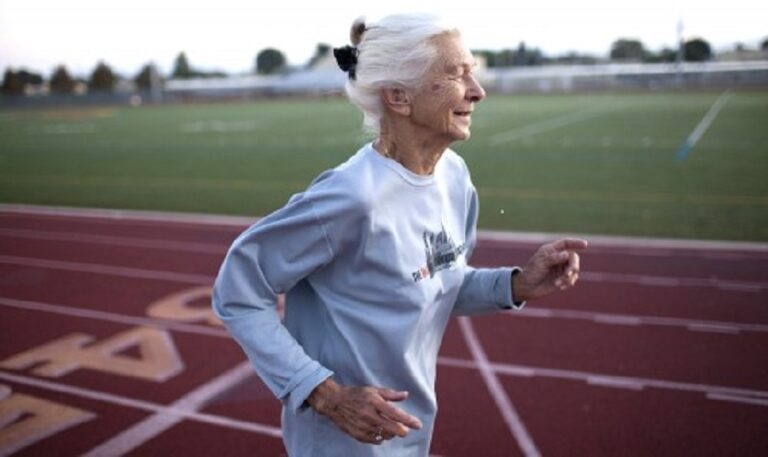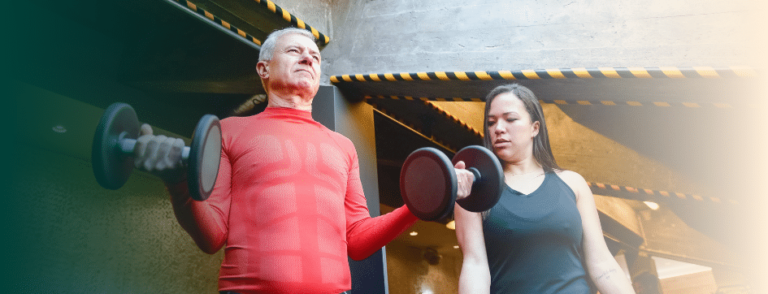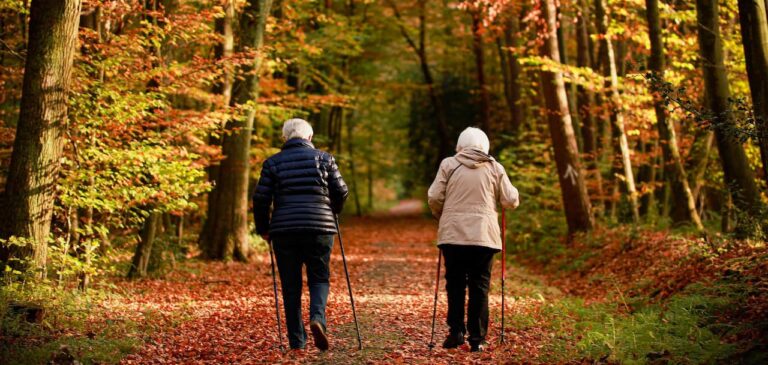Yoga is an extraordinary discipline to improve the quality of life of older people, offering various benefits, both physical and emotional. In a life stage where flexibility, balance and mental health are priorities, yoga for seniors is, without a doubt, a powerful ally.
From strengthening muscles to cultivating mental serenity, this ancient art can improve overall well-being, regardless of age. In addition to the various benefits of yoga for older people, it is important to highlight the adaptability and softness of this type of exercise, since modifications can be made to the postures to make them more accessible and safe.
Now, it is important to always do the exercises under the supervision of a qualified professional to be able to adapt them according to the particularities of each person.
Types of yoga for older people
Due to aging and the changes that occur in our body, it is essential to know how to choose the types of yoga that are especially suitable for older people due to their adaptability and safety. These are some examples:
- Hatha
This is one of the softest and most basic styles of yoga. It focuses on postures (asanas) and breathing techniques (pranayama) that help improve strength, flexibility and relaxation.
- Yin
Yin yoga focuses on gentle, long stretches performed primarily on the floor. It is a type of slow yoga in which postures are held for several minutes to improve flexibility. It is ideal for seniors who want to improve mobility and relieve joint stiffness.
- Restorative
This type of yoga focuses on relaxation and rest. It facilitates deep relaxation and restores balance to the body and mind. It is excellent for relieving stress and fatigue.
- Chair Yoga
Chair yoga adapts traditional yoga postures so that they can be performed while sitting in a chair. Chair yoga for seniors is ideal as it provides additional support and reduces the risk of injury. That is why people with limited mobility or balance problems can practice it.
Physical benefits of yoga for older people
- Increases flexibility
As we age, we lose mobility and flexibility. Yoga includes a variety of poses that stretch and strengthen muscles, helping to improve flexibility and range of motion in the joints. In this way we can prevent stiffness and loss of mobility related to aging.
- Improves balance and coordination
The vast majority of yoga postures work on balance and require body control, which is essential for older people who are usually at greater risk of falling and suffering bone injuries. People who, for example, have suffered a stroke and practice yoga regain their balance significantly. It also improves the ability to get out of a chair or bed, walk at a better pace, etc.
- Maintains muscle mass and increases strength
In the postures practiced in yoga, all the muscles of the body participate in a harmonious way. Many yoga postures even involve supporting the weight of the body in various positions. All this work helps to strengthen muscles and maintain muscle mass and strength that are lost with age.
- Improves breathing
Yoga teaches how to breathe properly, which allows older people to overcome anxiety attacks or stress symptoms. Likewise, they learn to relax and control different situations.
- Corrects bad posture
Yoga promotes proper and conscious body alignment, which can help improve posture and relieve tension in the back and neck. Improved posture is not only aesthetically beneficial, but can also help prevent injuries and improve breathing, circulation, and oxygenation of the body’s cells.
- Pain relief
Some yoga poses can help relieve chronic back pain or arthritis by stretching and strengthening muscles, improving posture, and reducing tension in the body.
Psychological and emotional benefits of yoga
- Improves memory and mental agility
Practicing yoga requires constant mental effort to internalize the different postures and their development, which improves concentration and memory. In this way, the cognitive deterioration typical of dementia is slowed down.
- Reduces stress and improves mood
Yoga, like sports in general, increases the production of endorphins, the “happiness hormones”, which can lead to an improved mood and a feeling of well-being. Furthermore, the fact of improving oneself in each yoga session makes older people feel that their self-esteem is reinforced.
- Improves sleep and reduces insomnia
Breathing and meditation reduce stress and anxiety, promoting relaxation, which helps you sleep and improve the quality of sleep.
- Enhances social relationships
Yoga is a discipline that is usually practiced in a group, where people with similar abilities and tastes participate. In this way, it facilitates social relationships and avoids situations of loneliness.
How to start practicing yoga for older people
It is never too late for older people to start practicing yoga. But it is important to follow these steps if we want to enjoy a safe and rewarding experience:
- Consult with a health professional
Before starting any exercise program, including yoga, it is essential to consult with a doctor or health professional to make sure that this is a safe and beneficial exercise for the specific person. At NAMI centers and residences we have a professional team in charge of offering this activity to our seniors, assessing the patient’s suitability before starting.
- Choose an appropriate style
As we have mentioned, there are several styles of yoga, some of which are gentler and adapted for older people. At NAMI, our yoga workshops are tailored to the needs, fitness level and health goals of our older patients.
- Instructor-led classes
To learn the correct form of the postures and avoid injuries, it is essential to practice yoga in classes guided by an experienced instructor who can provide clear instructions and appropriate modifications as necessary.
- Use accessories
If necessary, we can use accessories such as blocks, straps, pillows and even chairs to adapt the postures to the needs and abilities of our elders. These accessories can provide additional support and help you perform postures more comfortably and safely.
- Listen to your body
During yoga practice, it is important to listen to your body and respect its limits. Do not force any posture and if you feel any pain or discomfort, stop immediately. Take the necessary time, enjoy the process and don’t push yourself too hard.
Yoga for seniors
The integration of yoga into our activity program, as well as Mindfulness or exercises to recover muscle mass, allows us to help our seniors to improve your physical, mental and emotional quality of life.
Regular yoga classes are led by trained and experienced instructors who are responsible for specifically adapting the types of yoga to the needs and abilities of our seniors, thus ensuring a safe and beneficial experience.






